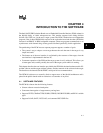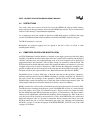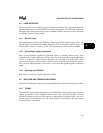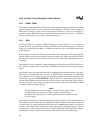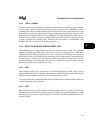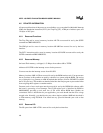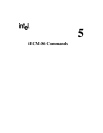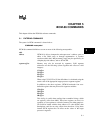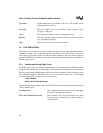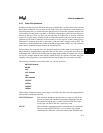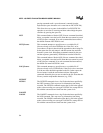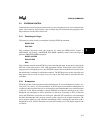
INTEL 186 EB/EC EVALUATION BOARD USER’S MANUAL
4-6
4.6 RELATED INFORMATION
All unreserved functions of the processor are available to you, except the Non-Maskable Interrupt
(NMI), the Breakpoint instruction (INT 3), the Trap Flag (TF), 16 Kbytes of address space, and
128 bytes of I/O space.
4.6.1 Reserved Functions
The Trap Flag and its vector in memory locations 4H–7H are reserved for use by the SSTEP
command and BREAKPOINTS.
The NMI pin and its vector in memory locations 8H–0BH are reserved for use by the host
interface.
The INT 3 instruction and its vector in memory locations 0CH–0FH are reserved for use by the
SSTEP command and BREAKPOINTS.
4.6.2 Reserved Memory
On-board Flash memory, as shipped, is 32 Kbytes from address 0H to 7FFFH.
Addresses 0H–3FFH are the interrupt vectors for the processor.
You must not alter the interrupt vectors from 4H–0FH.
Memory locations 400H–415H are reserved for use by the RISM monitor code. You must ensure
that no locations in this partition are used by code that is to operate with the RISM. The easiest
way of doing this is to generate an ASM-86 module that declares a DATA SEGMENT at 400H
that is 22 bytes long. This module can then be linked into the final program to prevent the linker
from assigning these registers to another module.
Fourteen words of user stack space must be reserved for use by the iRISM-186 software while
the board is processing a host interrupt. The CS:SP register pair is initialized by RISM to
0000H:0800H, providing a total stack size of 501 words before RISM data variables are
overwritten. If this is insufficient for your application, your code should alter the SP to a large
enough value. Normally, you should write your code to begin at address 800H and download it
to Flash memory using iECM-86. You should use any space left beneath your code as data
memory.
4.6.3 Reserved I/O
The I/O space from 400H–47FH is reserved for use by the host interface.






